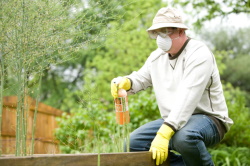Introduction
Every moms and dad's nightmare is the idea of their newborn encountering a vital emergency. Comprehending cardiopulmonary resuscitation (CPR) methods especially tailored for infants can be the distinction between life and fatality in such situations. Yet, several parents are unaware of the one-of-a-kind methods involved in carrying out CPR on infants. This detailed overview aims to outfit every parent with crucial understanding and skills concerning CPR on newborns, diving right into special strategies that can conserve lives.
CPR on Infants: Unique Strategies Every Parent Should Know
Cardiopulmonary resuscitation (CPR) is a lifesaving method utilized in emergencies when somebody's breathing or heart beat has quit. While lots of people recognize with adult CPR, the methods vary significantly when it concerns babies. The fragile nature of a newborn requires particular methods that vary from those made use of on older children and adults.
Understanding Baby Anatomy and Physiology
Before delving right into CPR strategies, it's critical to understand the anatomy and physiology of a newborn. Babies have smaller sized lungs, breakable ribs, and a various blood circulation system than adults. Knowing these distinctions can aid moms and dads carry first aid training course in Geelong out CPR more effectively.
The Relevance of Air passage Management
Newborns' respiratory tracts are smaller and more vulnerable to blockage; therefore, air passage management is important during an emergency. Moms and dads need to discover exactly how to properly remove an air passage to make certain efficient breathing restoration.
Recognizing When to Execute CPR
One of the very first steps in any type of emergency is identifying when CPR is necessary:
- Unresponsiveness: If your child isn't reacting or moving. No Breathing: If your infant isn't breathing typically or at all. Abnormal Skin Color: A blue color around lips or face suggests lack of oxygen.
Initial Analysis: The DRSABCD Approach
The DRSABCD method is crucial for assessing any emergency situation:
D - Danger: Ensure the atmosphere is safe. R - Response: Examine if the infant reacts by gently trembling them. S - Send out for Help: Require emergency situation assistance if needed. A - Airway: Open the airway by turning the head back gently. B - Breathing: Seek signs of breathing. C - Compression: If no breathing is discovered, commence CPR. D - Defibrillation: Make Use Of an AED if readily available and experienced to do so.The Actions to Execute Baby CPR
Performing CPR on a newborn varies considerably from adults because of their size and frailty:
1. Positioning
Lay the baby on their back on a firm surface.

2. Opening Airway
Gently turn the head back slightly to open the respiratory tract while guaranteeing not to exhaust it.
3. Check Breathing
Look for breast activities and listen for breath appears for about 10 seconds.
4. Chest Compressions
Using 2 fingers positioned just listed below the nipple line, lower around 1/3 depth of their breast (regarding 1-1.5 inches) at a price of 100-120 compressions per minute.
5. Rescue Breaths
After every 30 compressions, offer 2 mild rescue breaths:

- Seal your lips around their mouth and nose, Deliver each breath over one secondly while observing for chest surge, Repeat up until you see indications of life or assistance arrives.
Common Errors Throughout Infant CPR
Even sympathetic initiatives might falter as a result of usual errors:
- Applying excessive pressure during compressions can trigger injury. Failing to guarantee appropriate head tilt might block airflow. Not requiring aid early sufficient can postpone essential care.
Mental Preparation for Emergencies
It's all-natural to feel panic in emergencies; nevertheless, mental prep work plays a critical function in successfully carrying out first aid actions:
- Remain calm; stressing prevents clear thinking. Practice mindfulness strategies before getting in parenthood.
FAQs About CPR on Newborns
What must I do if my newborn quits breathing?
If your newborn stops breathing, quickly assess their responsiveness, call for help, inspect their airway, and start CPR as thorough above.
How frequently needs to I take first aid courses?
It's suggested that moms and dads rejuvenate their knowledge every 2 years by taking first aid training courses or details infant CPR training sessions.
Can I utilize an AED on an infant?
Generally talking, AEDs are not advised for infants under one years of age unless particularly made for such use; always follow supplier's instructions.
Where can I locate first aid courses near me?
You can look online making use of terms like "first aid training course near me" or check neighborhood hospitals or recreation center that usually supply these classes regularly.
How long does a first aid qualification last?
Typically, the majority of first aid qualifications continue to be legitimate for three years prior to needing renewal via refresher courses which include upgraded practices like DRSABCD protocols.

Is it essential to learn mental wellness first aid as well?
Absolutely! Mental health first aid outfits moms and dads with abilities necessary not only in physical emergency situations yet additionally in determining psychological distress among kids and adolescents.
Conclusion
Understanding "CPR on Newborns: Special Methods Every Parent Must Know" isn't just concerning obtaining technical skills; it's about encouraging yourself certification CPR courses Geelong as a caregiver ready to encounter unforeseen obstacles head-on. Whether with committed training programs like those supplied by various organizations or exercising hands-on strategies with member of the family during workshops-- every initiative counts in the direction of constructing confidence in your ability to react successfully during emergency situations entailing your precious newborns.
Incorporating this expertise right into your parenting toolkit can indicate saving lives when it matters most. So why wait? Subscribe today for courses such as "first aid program," "cpr training," or specialized "baby first aid training course" alternatives readily available close by-- you never ever understand when you could require them!